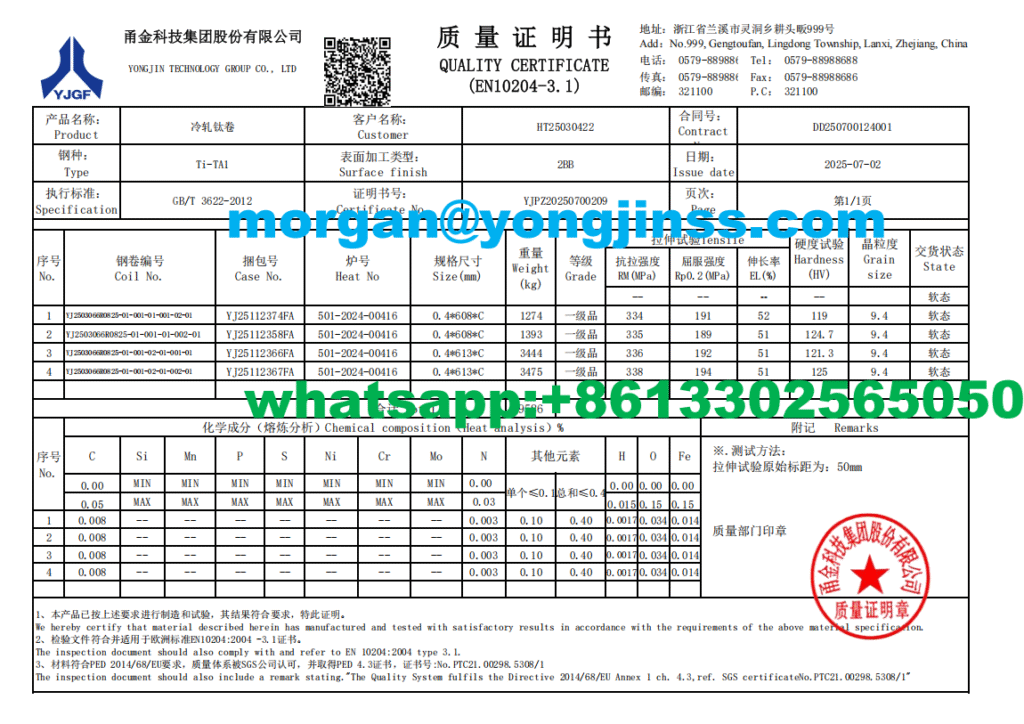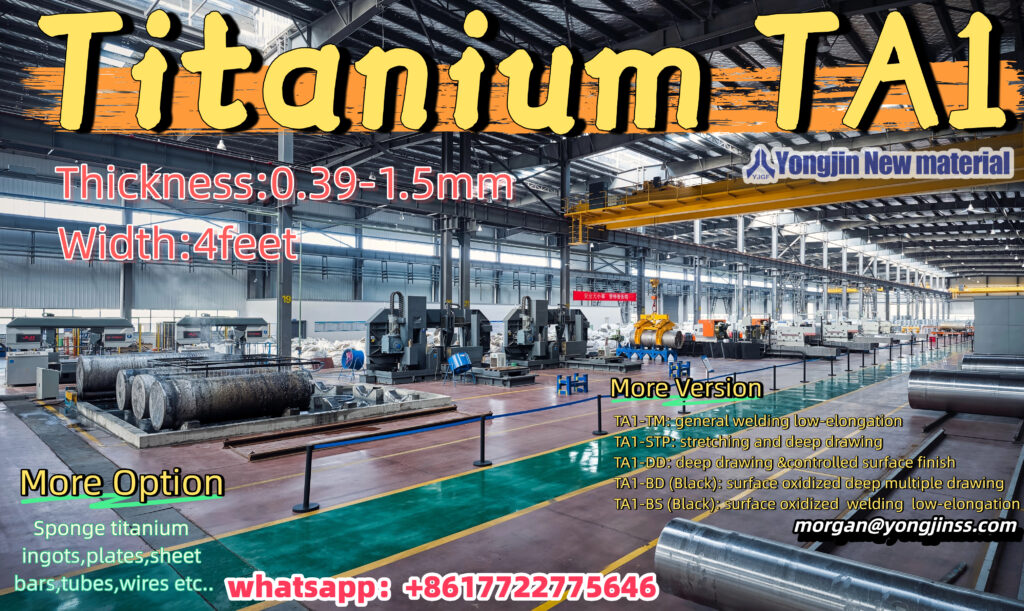What is the difference between TA1(Gr1) and TA2(Gr2) titanium YJGF
TA1 and TA2 are the two lowest-strength grades of commercially pure titanium:
| Feature | TA1 (Grade 1) | TA2 (Grade 2) |
|---|---|---|
| Titanium content | ≥ 99.5 % Ti (≲ 0.08 % O, ≲ 0.20 % Fe) | ≥ 99.0 – 99.5 % Ti (≲ 0.18 % O, ≲ 0.30 % Fe) |
| Tensile strength (UTS) | ~ 240 MPa | ~ 345 MPa |
| 0.2 % proof (yield) stress | ~ 138 MPa | ~ 275 MPa |
| Elongation at break | ~ 24 % (better ductility/formability) | ~ 20 % |
| Corrosion resistance | Slightly better in extreme or crevice-prone media | Still excellent in most chemical/seawater service |
| Formability & weldability | Best of all CP grades (great for deep drawing) | Very good (widely used in sheet, tube, bar) |
| Typical uses | Bellows, precision sheet, chemical internals, implants | Heat exchangers, piping, vessels, general industrial fittings |
| Relative cost & availability | Less common and slightly costlier | “Work‑horse” grade—readily available, most economical |
🔍 Why they differ
- Chemical purity:
TA1 (grade 1) is produced with the lowest levels of interstitials like oxygen, iron, nitrogen, and hydrogen. As impurity levels rise (especially oxygen and iron), strength increases but ductility decreases. Grade 2 corresponds to a slightly higher impurity content—hence its increased strength compared to grade 1 - Mechanical performance:
Using data consistent across sources, grade 1 shows ~240 MPa UTS vs ~345 MPa in grade 2, with corresponding jump in yield strength and a modest drop in elongation (from ~24 % to ~20 %) - Corrosion and fracture toughness:
TA1’s extreme purity grants it a slight edge in aggressive environments—chloro-laced or acidic streams, or micro-crevices—where interstitials may promote local degradation. Still, both grades exceed the resistance of stainless steels and many duplex alloys in common service media - Forming and welding:
Thanks to its softness and low-strength, TA1 is easier to cold-form (bending, deep drawing) and has lower risk of spring-back or stress cracking during fabrication. TA2, while a bit tougher to press, still machines and welds readily—but is preferred when more strength is needed in moderately thick material (≥ 1 mm) - Cost & sourcing:
TA2 is generally more commonly stocked worldwide (especially in plate, sheet, tubing) and benefits from lower production costs. TA1 may carry a premium when purity or extreme ductility is the priority
✅ Which should you choose?
- Go with TA1 (Grade 1) if:
- You’re making very thin or intricately formed components (e.g. diaphragms, chemical catalyst internals, body jewelry, certain implants).
- Maximum corrosion resistance in aggressive fluids is required.
- Go with TA2 (Grade 2) if:
- You need higher strength (e.g. piping, vessels, heat exchangers).
- Formability is still needed but you’re working in standard sheet/bar/tube thicknesses.
- Cost or supply chain availability is a deciding factor.
Practical at-a-glance:
| Consideration | Prefer TA1 | Prefer TA2 |
|---|---|---|
| Corrosion exposure | Most aggressive (strong acid, chlorine) or micro-crevice risk | Typical seawater, nitric, organic acids, alkaline, hydrocarbons |
| Formed thin parts? | Yes | Possible up to ~1 mm–2 mm with care |
| Load‑bearing part? | No | Moderate loads, pressure piping, mechanical fixtures |
| Budget/supply concerns? | Lower priority | More cost‑effective and widely stocked |
🛠 Standards & specs
- TA1 ≈ ASTM B-265 Grade 1 / UNS R50250 / ISO 5832‑2
- TA2 ≈ ASTM B-265 Grade 2 / UNS R50400
Both comply with general purpose standards such as ASTM SB‑338 (plate/strip), B‑348 (bar, especially bar for 3D printing), ASTM F‑67 (implant‑grade CP‑Ti) where applicable
Bottom line
- TA1 (Grade 1): ideal for the most corrosion‑sensitive or intricate form‑driven parts.
- TA2 (Grade 2): better strength, more widely available, and suitable for general purpose industrial service.
When specifying raw material, engineers often choose TA2 by default unless ductility or resistance to specific acid/chlorine conditions dictates TA1 as the safer choice.



